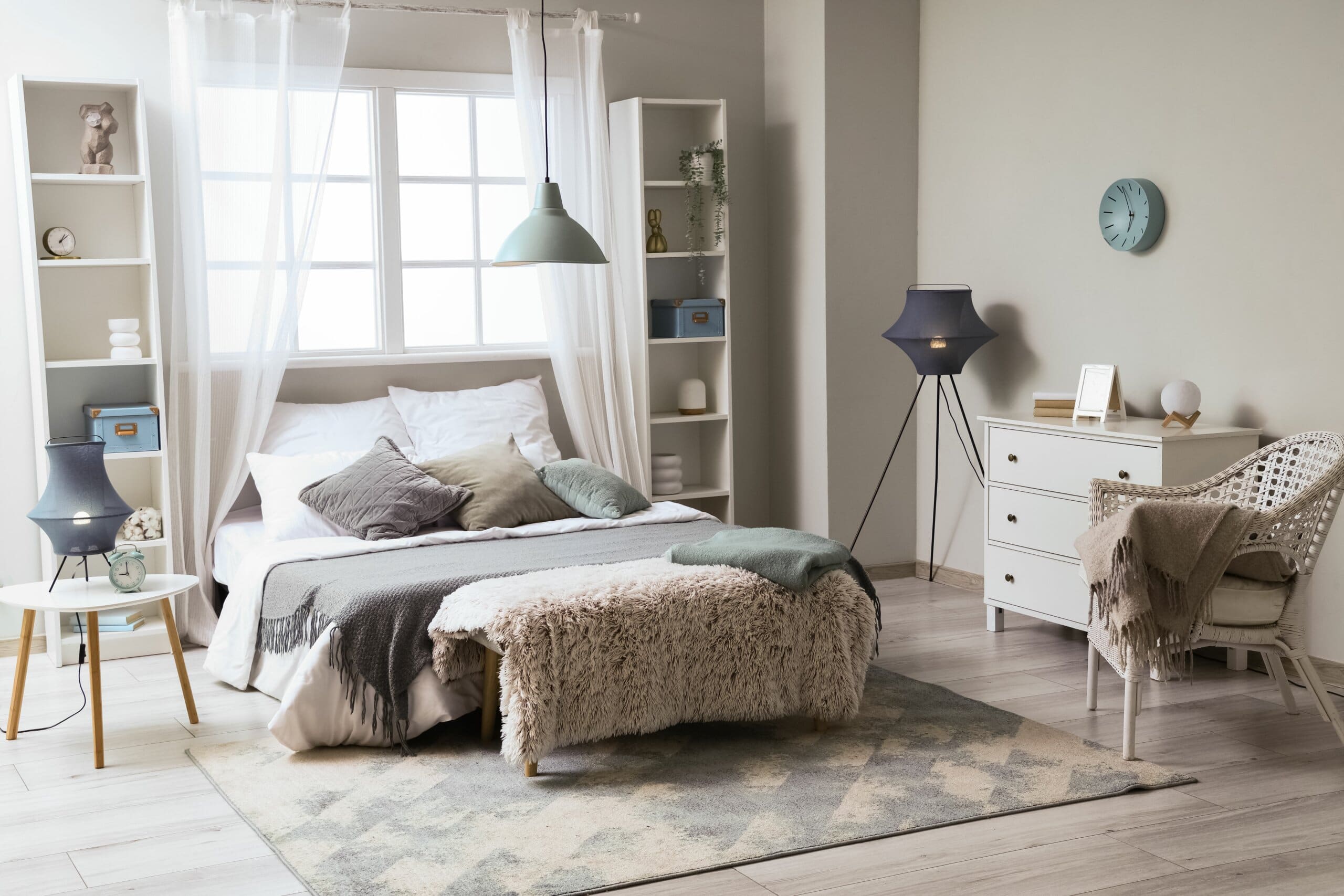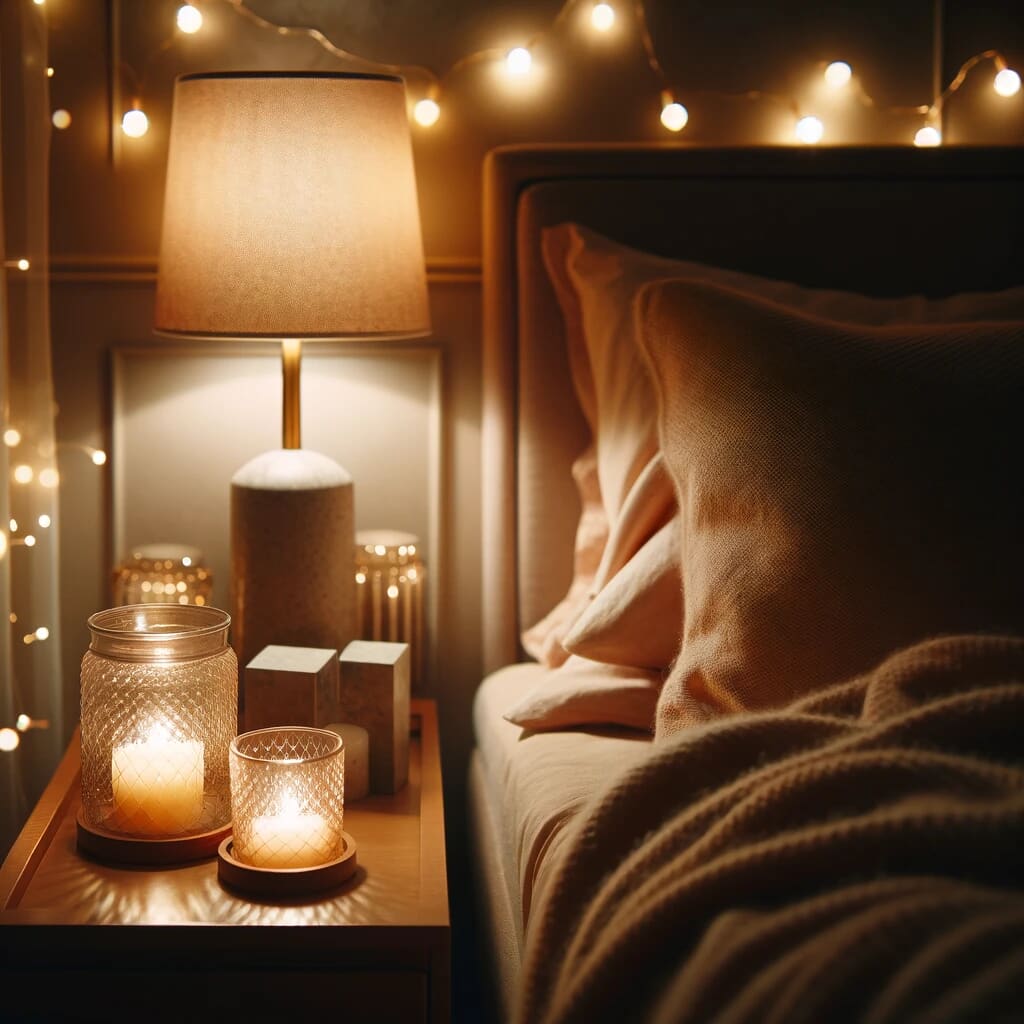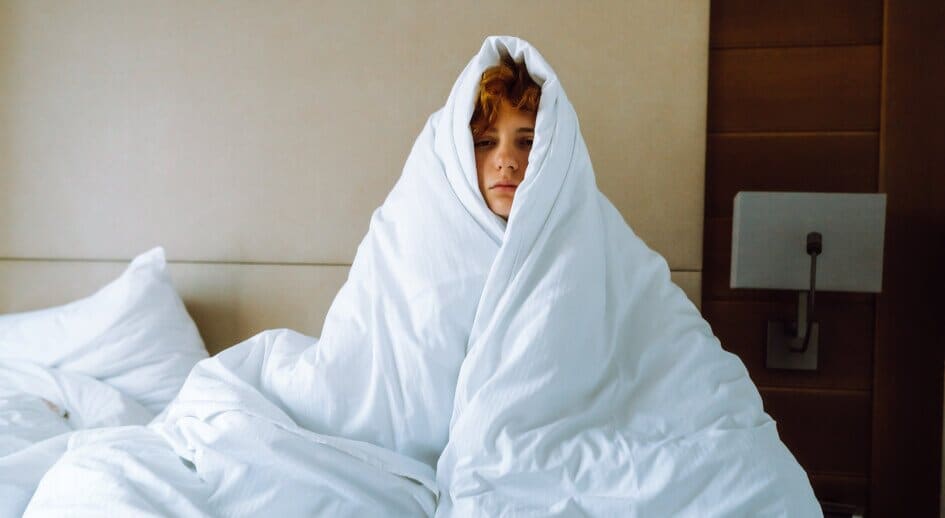Would you rather cocoon yourself in your duvet than face the freeze in the mornings? We’ve been there. Sometimes, no matter what nifty tips and tricks you’ve tried to warm yourself up, you're still struggling with a cold bedroom, leaving you dreaming of the toasty, cosy bedroom you’d prefer to snuggle up in at the end of the day. But why does your bedroom feel so cold?
Turns out, there are several things that are making your bedroom feel cold, whether physically or psychologically. You probably won't even realise that these little things are having a huge impact on how your bedroom feels. By fixing these nine common mistakes, you'll be able to make your bedroom warmer as soon as possible.

These are the things making your bedroom cold
1. It’s time to drop the clean girl aesthetic
We admit, we love the clean girl trend as much as Kendall Jenner, but it doesn’t do your bedroom any favours come the winter. The main reason is that this trend lends itself to dull neutral colours, like white and light blue, as well as minimalist decor and a mature style, which, while cool and refreshing, doesn’t connote cosiness at all, and makes you feel physically cooler.
Instead, we’d recommend going for a cottagecore look, with cute fairy lights, candles and layered textures and colours. Don’t worry, if you prefer a minimalist style, you can still keep things tidy, but try layering cosy colours like orange and yellow, which will remind you of warmer weather and instantly make you feel warmer. Throws, decorative cushions and soft lighting are the perfect place to start with creating a soft, cosy, cottagecore bedroom.
2. You keep using the ‘Big Light’
Lots of people feel a certain type of way about turning on the big light, as the harsh light can feel overstimulating and generally make the room less attractive. No-one wants to see every speck of dust, plus your bedroom shouldn’t have any similarity to a dentist’s office…
Mainly, however, the Big Light will make your bedroom feel cold, especially if it emits a white light that reminds your brain of the outside. A bright light will suggest to your brain that it’s daytime whenever you turn it on, preventing it from producing the sleep hormone, melatonin. This will not only make it harder for you to drift off at night, but make your body think it’s outside where it’s much colder.
Instead, opt for soft fairy lights, candles and lamps, and switch out your bulbs for ones that produce a more orange glow. This will help your mind and body relax, whilst creating a warmer aesthetic in your bedroom, inadvertently tricking your body into warming up too.
This is by far the easiest way to create a cosy atmosphere in your bedroom, instantly calming your body and making you ready for relaxation and sleep.

3. You need to switch out your scents
Smells play a huge role in how we feel physically. Not only can they trigger memories, but they can have such strong psychological effects that our bodies are influenced. Certain scents can also genuinely feel ‘cold’, the most obvious being menthol. Therefore, you should remove any mint or peppermint candles from your bedroom, and avoid peppermint essential oils.
Instead, go for scents that remind you of warmer days, or get you feeling toasty. Vanilla is a great scent for warming you up, as the sweet smell is associated with contentment and comfort - totally needed when you’re feeling chilly, and the perfect addition to a cosy bedroom.
4. Your curtains are the wrong material, or you use blinds instead
The most common curtain materials are cotton and linen, which are generally good for the home as they’re highly breathable and don’t hold onto bad smells. However, this breathability also makes them bad at stopping cold air passing through into your home. If you just have blinds in your bedroom, rather than curtains, you’ll find you end up with a cold bedroom, as not only does cold air enter through the gaps in the blind’s slats, but fabrics are generally better insulators than thin pieces of wood or plastic.
You should opt for curtains made from thicker materials, like suede or velvet. Not only are these materials gorgeous, but are excellent at making your bedroom warmer, preventing cold air from getting in from the outside, which will be the cause of your cold bedroom.
You can also find thermal or specially insulating curtains, including blackout thermal curtains. These are designed especially to keep your bedroom warm, and increase the energy efficiency of your radiators by preventing heat from escaping.
5. You’re letting in cold air through your windows
The windows are closed, so there’s no way the cold outside air can get in, right? Wrong! Draughts can get in through the tiniest crack or gap in the walls, especially in older homes. Check your window seals, ensuring there are no areas where it’s starting to pull away. UPVC windows can easily make way for draughts if the sealant isn’t in place properly, even with double or triple-glazed windows.
You can easily fix these gaps with caulk or sealant (check if it’s suitable for use on your type of window first) and neatly fill in the places where cold air is coming through. You can also use items such as self-adhesive foam weather strips.
If you only have single glazing, you can invest in insulating window film, which you can easily stick to the glass to enhance its thermal abilities, keeping cold air outside, where it belongs!
Outside air accidentally coming into your bedroom, coupled with the wrong type of curtains, is the most obvious reason your bedroom is so cold, so be sure to check and fix these first.


6. You need to get nostalgic!
Feeling warm inside is key to feeling warm on the outside. If you’re unhappy or irritable, you’re more likely to feel the cold, whereas if you’re relaxed and calm, it’ll be easier to warm up. Placing nostalgic items around your bedroom, such as photos of you and your family, soft toys from when you were younger, or gifts that you’ve received from loved ones will give you that ‘warm and fuzzy’ feeling inside.
Don’t be scared to create clutter - you can tidy up in your spring-clean. For now, fill your shelves with things that make you feel safe, loved and, you guessed it, warm!
7. Stop kicking your pet off the bed
While lots of people already let their dog or cat sleep on their bed with them, reaping the benefits of sharing their bed with a pet, some animals are in the habit of sleeping in their own bed, either in the same room or downstairs.
Getting your pet into the bed with you for a cuddle, even if they don’t stay there all night, will not only physically warm you up as you share body heat, but will increase the level of the hormone Oxytocin in your body. Known as the ‘love hormone’, this also produces a warm, cosy feeling in your body. Cuddling a pet can also reduce feelings of anxiety, which can cause your blood to flow less efficiently and therefore make you colder. So, spooning your pet will ease your anxieties AND warm you up!

8. Don’t splurge on silk pillowcases, try a fleece bedspread
Silk and satin pillowcases have been popular for a while now - the soft, gentle material is great for preventing breakouts and hair damage. However, they’re highly breathable, which is great for your skin, but not your temperature. These types of pillowcases are designed to stay cool and absorb moisture, offering a ‘cool side of the pillow’ feeling you’ll love in the summer, but not the winter.
Instead, try a fleece bedspread. In fact, fleece duvet covers and bed sheets have been getting more and more popular, and are generally quite inexpensive. Snuggling into a fleece-covered bed will feel like cuddling a giant teddy bear, and the fuzzy material traps extra heat, insulating your entire body. As we lose a lot of heat from our heads, it’s a much better idea to opt for fleece pillowcases over silk or satin.
9. Don’t paint your room blue, purple or green
Similarly to scents, colours can trigger our brain and body to feel a certain way. As we mentioned, avoid ‘clean girl’ colours like bright whites and cool light neutrals, as they connote coldness, iciness and freshness - while this can be great in the summer, in the winter, you should go for warmer, earthier colours.
Colour theory also suggests that tones like blue, purple, and even green can connote feelings of sadness and indifference. Instead, go for colours on the opposite side to these on the colour wheel, like reds, yellows and oranges. Not only do these warm tones remind us of warmer weather, but can make your space feel much more welcoming, which is exactly what a cosy bedroom should do.

How to create a cosy bedroom
So, these mistakes are the likely culprits for your cold bedroom. You might not want to make all of these changes, but the easiest way to create a cosy atmosphere in your bedroom is to use soft, warm lighting like a bedside table lamp and fairy lights, rather than the ‘big light’. Using orange-coloured bulbs will make a huge difference, too, as harsh white light will delay your body producing melatonin, the sleep hormone, keeping you awake and alert for longer - the opposite of that comfy, relaxed feeling that’ll help you warm up.
Avoid the ‘clean girl’ aesthetic, or colours that have cool undertones, like light blues and greys. These make our brains think of refreshments, which is great for summer, but in the winter months, you should opt for warmer tones like orange and red.
If, after you've made these changes, you still find you're suffering with a cold bedroom, read our guide on How To Get Out Of Bed When It’s Cold (without Spending Too Much!) for the cheapest ways to make your bedroom warmer, including tips of how to keep warm without a heater. Cold sleepers can also read our guide on How To Warm Up Cold Feet In Bed, for super snuggly sleep every night.






